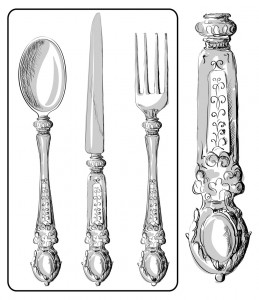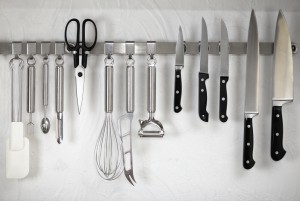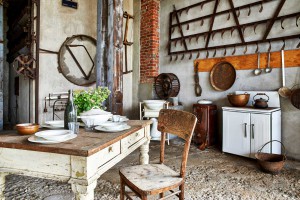OVERVIEW
The arrival of dishwashing machines provided a welcome relief from washing cutlery by hand but created a problem for cutlery manufacturers. The main problem with traditional manufacturing methods in flatware was that the glue and filler (resin) used to connect the hollow knife handle to the blade softened and expanded with the heat of the dishwasher enough to actually push the blade away from the handle, causing the knife to break apart.
Moltupol cement solved this problem. Moltupol ceramic cements have very specific formula, and are specifically designed to be very strong and to withstand high temperatures. In using Moltupol cement, cutlery manufacturers were able to develop ‘dish-washer’ friendly cutlery.
 KNIFE MANUFACTURING
KNIFE MANUFACTURING
Knives can either have a hollow handle construction or a solid handle construction. Solid handle knives are less expensive than hollow handle knives but are normally made from one piece of steel (i.e. the handle is stamped from the same sheet of steel as the blade). These knives often have a lesser finish, limited pattern definition in the handle, and as the material in the handle is the same as the blade, a compromise must be made between cutting ability and corrosion resistance.
Traditionally, the finest quality cutlery and flatware is constructed in two separate pieces, where a forged blade with a tang is mounted to a hollow handle using either a resin or cement. These hollow handle knives have many advantages over solid handle knives. For example, the knife handle can be constructed from a different a different material to the blade, and a special pattern definition and polish can be obtained on the handle. Another principal reason for using a hollow handle is that the weight in the knife is better distributed, enabling manufacturers to make a knife with a handle is wide enough so that it is comfortable to use, but without being too heavy and cumbersome. In short, the knife is perfectly balanced when placed in the hand.
 KITCHEN UTENSILS
KITCHEN UTENSILS
Approximately 20 years ago, Moltupol expanded out of the cutlery industry and started to produce its oxysulphate cement for kitchen tools / utensils. Other cement derivatives were developed following extensive testing and to meet the specific needs of particular clients. Moltupol now produces cement for a number of different kitchen utensil companies (at both first line and second line) and has clients all over the world, including China and South America.


 WELCOME
WELCOME KNIFE MANUFACTURING
KNIFE MANUFACTURING KITCHEN UTENSILS
KITCHEN UTENSILS